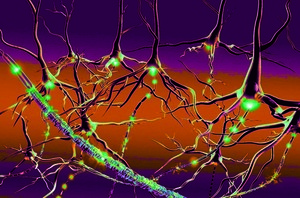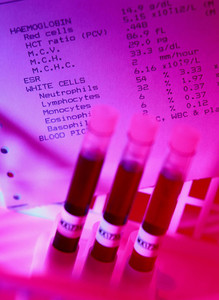Author Leonie Hussaarts and colleagues discuss in a white paper the regulatory frameworks in use worldwide to approve non-biological complex drugs (NBCDs) and their follow-on versions [1].
Although NBCDs are fully synthetic materials, like biologicals, NBCDs consist of different (closely related) structures that cannot be fully quantitated, characterized or described by (physico)chemical analytical tools. The composition and quality of NBCDs are dependent on a robust and well-controlled manufacturing process – just as is the case with biologicals.
Examples of NBCDs include nanomedicines such as liposomes, polymeric micelles, glatiramoids and iron-carbohydrate complexes.
While regulatory guidance for authorization of generic versions of small molecule drugs is well established, guidance for follow-on versions of complex drug products is still evolving. The definition of NBCDs is not officially recognized by either the European Medicines Agency (EMA) or the US Food and Drug Administration (FDA).
EMA has recognized the complications associated with approval of originator NBCDs and tends to refer to biosimilars regulations when considering follow-on NBCDs. However, one major difference is the fact that follow-on NBCDs may receive marketing approval through the decentralized route, unlike biosimilars, which must follow the centralized procedure [2]. The agency has also issued reflection papers outlining the extra data required for approval of follow-on versions of iron-based nano-colloidal products [3] and intravenous liposomal products [4].
FDA uses the term ‘complex product’ and requires originator applicants to follow the new drug application (NDA) route and follow-on NBCDs to use the generics – abbreviated new drug application (ANDA) – route. The agency has, however, issued draft guidance documents for certain NBCD families, e.g. liposomes, different iron carbohydrates (iron sucrose, iron gluconate, ferumoxytol) and cyclosporine ophthalmic emulsions [5].
Aligning regulatory processes can reduce development costs and prevent unnecessary repetition of clinical trials. The World Health Organization (WHO), while it has developed global guidelines for biosimilars, has not (yet) taken up the challenge to develop a global regulatory framework for follow-on NBCDs.
One example of the lack of regulatory alignment associated with NBCDs is the fact that the terms ‘complex drug generic’ and ‘biosimilar’ are used for low molecular weight heparin (LMWH) follow-on products by FDA and EMA, respectively. This is because they are considered chemical drugs by FDA and biologicals/biotherapeutics by EMA.
One of the key questions remaining for follow-on NBCDs, according to Hussaarts et al., is how to assess the equivalence of these complex products. The authors identify a number of points for which consensus was found among the stakeholders who were present at the 1-day conference at the New York Academy of Sciences. The stakeholders included scientists from originator and generic/follow-on pharmaceutical companies, academia and regulatory bodies from different parts of the world.
Topics identified as requiring follow-up were:
- assessment of critical attributes to establish equivalence for follow-on versions
- the need to publish scientific findings in the public domain to further progress knowledge in the field
- the necessity to develop a worldwide consensus regarding nomenclature and labelling of these complex products
- regulatory actions when substandard complex drug products are identified
The authors concluded that ‘the lively discussions on equivalence of complex drug products during international meetings and in scientific publications indicate that the outstanding challenges addressed above continue to be a topic of debate’.
Conflict of interest
The authors of the research paper [1] did not provide any conflict of interest statement.
Editor’s comment
Readers interested to learn more about NBCDs are invited to visit www.gabi-journal.net to view the following manuscript published in GaBI Journal:
Non-Biological Complex Drugs (NBCDs) and their follow-on versions: time for an editorial section
Complexity in the making: non-biological complex drugs (NBCDs) and the pharmacopoeias
GaBI Journal is indexed in Embase, Scopus, Thomson Reuters’ ESCI, and more.
Readers interested in contributing a research or perspective paper to GaBI Journal – an independent, peer reviewed academic journal – please send us your submission here.
Related article
Is the EU ready for non-biological complex drug products?
References
1. Hussaarts L, et al. Equivalence of complex drug products: advances in and challenges for current regulatory frameworks. Ann N Y Acad Sci. 2017 Apr 26. doi:10.1111/nyas.13347. [Epub ahead of print]
2. GaBI Online - Generics and Biosimilars Initiative. EU guidelines for biosimilars [www.gabionline.net]. Mol, Belgium: Pro Pharma Communications International; [cited 2017 May 12]. Available from: www.gabionline.net/Guidelines/EU-guidelines-for-biosimilars
3. GaBI Online - Generics and Biosimilars Initiative. EMA issues reflection paper for follow-on versions of iron-based nano-colloidal products NBCDs [www.gabionline.net]. Mol, Belgium: Pro Pharma Communications International; [cited 2017 May 12]. Available from: www.gabionline.net/Non-Biological-Complex-Drugs/Guidelines/EMA-issues-reflection-paper-for-follow-on-versions-of-iron-based-nano-colloidal-products
4. GaBI Online - Generics and Biosimilars Initiative. EU guidelines for follow-on NBCDs [www.gabionline.net]. Mol, Belgium: Pro Pharma Communications International; [cited 2017 May 12]. Available from: www.gabionline.net/Non-Biological-Complex-Drugs/Guidelines/EU-guidelines-for-follow-on-NBCDs
5. GaBI Online - Generics and Biosimilars Initiative. US guidelines for follow-on NBCDs [www.gabionline.net]. Mol, Belgium: Pro Pharma Communications International; [cited 2017 May 12]. Available from: www.gabionline.net/Non-Biological-Complex-Drugs/Guidelines/US-guidelines-for-follow-on-NBCDs
Permission granted to reproduce for personal and non-commercial use only. All other reproduction, copy or reprinting of all or part of any ‘Content’ found on this website is strictly prohibited without the prior consent of the publisher. Contact the publisher to obtain permission before redistributing.
Copyright – Unless otherwise stated all contents of this website are © 2017 Pro Pharma Communications International. All Rights Reserved.








 0
0











Post your comment